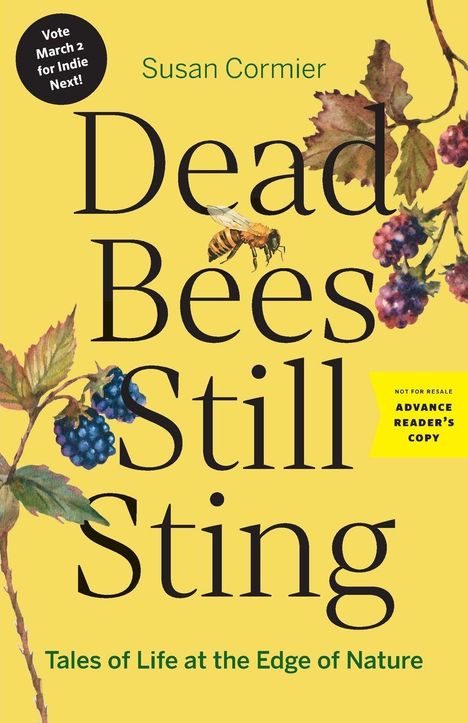Susan Cormier: Dead Bees Still Sting, Kartoniert / Broschiert
Dead Bees Still Sting
- Tales of Life at the Edge of Nature
Sie können den Titel schon jetzt bestellen. Versand an Sie erfolgt gleich nach Verfügbarkeit.
- Verlag:
- Greystone Books, 05/2026
- Einband:
- Kartoniert / Broschiert
- Sprache:
- Englisch
- ISBN-13:
- 9781778402012
- Artikelnummer:
- 12458107
- Umfang:
- 272 Seiten
- Gewicht:
- 289 g
- Maße:
- 216 x 140 mm
- Stärke:
- 17 mm
- Erscheinungstermin:
- 19.5.2026
- Hinweis
-
Achtung: Artikel ist nicht in deutscher Sprache!
Klappentext
"A braided love letter to a pastoral life of joy and heartbreak that added a moment of quiet at the end of each busy day. A book that city dwellers would do well to read."---Marc Hamer, author of How to Catch a Mole
For readers of Raising Hare and How to Catch a Mole comes a poetic exploration of life at the precarious edge of nature and human settlement.
On a small acreage teeming with wild and domestic animals, buzzing with a half-million honeybees, and dotted with fruit trees---including one affectionately named Bill---lives beekeeper-poet Susan Cormier. Circling the farm, an aggressive tangle of forest and blackberry vines thrives, but beyond, the shadow of urban development creeps ever closer. Over five seasons Cormier takes readers through the rhythms of semi-agricultural life, reflecting on the dichotomy between beauty and grief, loss and renewal, and humor and the often heart-wrenching realities of animal existence in an agrarian landscape.
Susan's acreage is filled with an ever-changing cast of animals, from the hand-raised quail Birb, who likes to play peekaboo, to companionable cats and dogs, Frodo the rescued rabbit, deer, elusive mink, and owls. Dead Bees Still Sting also offers a rich education in beekeeping, guiding readers through the complexities of hive life, the art of capturing swarms, and the serious challenges facing bees today, including the unintended harm caused by inexperienced hobbyists.
Lyrical and poignant, Dead Bees Still Sting is a moving meditation on the cycles of nature, vulnerability, persistence, and survival. Above all, it is a celebration of what it means to belong to a place, to witness its changes, and to find beauty and meaning in the ongoing conversation between humans and nature.

